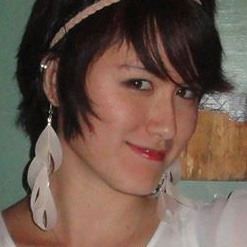
Unification Thought is a philosophical expression of the teachings of Rev. Sun Myung Moon. Those teachings were first published in English as the “Divine Principle”, but that book is very theological in nature. It contains numerous remarkable insights on the Bible which, when strung together, provide a profound understanding of God, humans, and the universe.
However, it was extremely fortuitous that a few of Rev. Moon’s earliest disciples realized that what was contained in the Divine Principle went far beyond the teachings of one faith.
One disciple in particular came from a Confucian upbringing, and eventually became deeply involved in philosophy, in order to understand the human condition. This individual was Dr. Sang Hun Lee and when he understood the scope of Rev. Moon’s teachings, he was eventually entrusted by Rev. Moon to research it more deeply and reorganize the ideas into the categories of philosophy rather than those of theology.
Beyond One Religion or Philosophy
In Dr. Lee’s paper “The Necessity, Character, and Method of Unification Thought”, he gave several reasons for defining Rev. Moon’s teachings in terms of philosophy rather than theology. Of seven, the first two are that Unification Thought was developed…
- “In order to understand the Principle deeply: There are many people who read Divine Principle or listen to Divine Principle lectures, and have some questions about it. Even if people understand the Principle entirely, many of them realize, through listening to Unification Thought, the shortcomings of their appreciation of the Principle. Unification Thought is necessary for understanding the Principle deeply.”
- “In order to universalize the expression of the Principle (i.e., for the sake of other religions and thoughts): Unification Principle appeared as God’s Word for the salvation of all human beings. The Divine Principle is expressed from a Judeo/Christian point of view. In order to contribute toward a better understanding of Buddhism, Confucianism, Taoism, Islam, and other thoughts, we should set up forums for all religions. That is, expressions of the Principle should be universalized in order to be comprehended by all religions.”
Personally, Unification Thought did exactly those things for me, because – as a child in America in the 60s – I had stepped away from Christianity in my high school and college years, instead looking seriously into existential philosophy and also into Eastern religions. Upon graduation (bach. industrial design w/honors), I sought a path toward spiritual understanding rather than a career. After looking through different Eastern faiths, I finally stumbled upon Unificationism and was impressed by the Divine Principle, and finally captivated by Unification Thought. That was 1974, exactly 40 years ago.
Examining the characteristics of the source
During my years since, as I studied the Principle and Unification Thought, I consistently found that Dr. Lee’s first reason for Unification Thought – to understand the Principle deeply – was wonderfully true. Through the next series of articles here, I will try to give examples of this very point.
 For starters, let’s begin with the first chapter of the Divine Principle. It’s “The Principle of Creation”, and one of the first statements is that accurate understanding must begin with knowledge of God. To help us do that, the first thing the Principle looks for are characteristics in nature that can tell us something about its Origin. It finds two sets of dual characteristics – Internal Nature and External Form, and Yang and Yin – within the mineral, plant, animal, and human worlds. On those two bases, it explains that 1) the Origin is a God of personality1 and also that 2) the Origin is the source of all maleness and femaleness in the world.2
For starters, let’s begin with the first chapter of the Divine Principle. It’s “The Principle of Creation”, and one of the first statements is that accurate understanding must begin with knowledge of God. To help us do that, the first thing the Principle looks for are characteristics in nature that can tell us something about its Origin. It finds two sets of dual characteristics – Internal Nature and External Form, and Yang and Yin – within the mineral, plant, animal, and human worlds. On those two bases, it explains that 1) the Origin is a God of personality1 and also that 2) the Origin is the source of all maleness and femaleness in the world.2
I have to admit that the idea that God has a personality didn’t initially strike me as particularly ground-breaking. That is until I stepped back from my own ethnocentricity and acknowledged that many other faiths or worldviews don’t actually consider that understanding obvious at all. I realized that – when Rev. Moon first began teaching in Korea in the 1950s – a large part of his audience had a Buddhist or Taoist or Confucian background.
In fact, a large part of the world has these backgrounds. And in those beliefs, there is no personal God, a main Deity who is emotionally involved in humans as His children, a God who cares, loves, excitedly anticipates, and worries like a parent. So, although the conclusion that God is one of character and feeling might be not unfamiliar to me, to a great many other people in the world, it is a critically essential and remarkable understanding.
Revealing the Mother God
But the other dual characteristic – the one that God is a harmonized being of Yang and Yin – is challenging in that it exposes the nature of God as not only masculine and paternal, but also feminine and maternal.
As a Christian who grew up with the Jewish image of God depicted in the Old Testament, and with the Christian image of a triune God (Father, Son, and Holy Spirit), I was – and am – deeply rooted in an understanding of God as a masculine “Father” and “King”. But the teaching of God as having both the Original Yang and the Original Yin changes my relationship with God profoundly.
 It is at least as different as my relationship with my father was different from my relationship with my mother – the way they each moved me was vividly different. And when I look at the founders of Unificationism, I realize that I have gained insight into God’s heart and character from both Rev. and Mrs. Moon.
It is at least as different as my relationship with my father was different from my relationship with my mother – the way they each moved me was vividly different. And when I look at the founders of Unificationism, I realize that I have gained insight into God’s heart and character from both Rev. and Mrs. Moon.
For example, during his speeches, I would often see him entertaining us and making us laugh. But a couple of times, I looked over at Mrs. Moon and observed that she was serious or even distressed. One particular time, when Rev. Moon was working hard to make us laugh, I noticed that Mrs. Moon was sitting quietly and weeping.
I realized that he probably had something urgent and weighty to tell us, but saw that we were not ready to receive it. So he had to lift our spirits up to a point where he could finally say what was on his mind. I believe that knowing her husband’s heart caused her tears. That was but one of many instances years ago, which revealed to me the mother’s heart of God. It was very different, but very powerful and moving for me to discover that.
And so I see a side of God that 2000 years of Christianity has not depicted so clearly to me, and that Judaism before it, and Islam after it, have also not revealed this clearly. Yet to think of God as not only a Divine Father to me but also as my Divine Mother affects my understanding and my relationship with God profoundly.
Divine Character – Heart, Logos and Creativity
My conclusion from examining the other set of dual characteristics – Internal Nature and External Form – that God has a character, also builds on my Christian understanding. The image of God that the Catholicism of my childhood has left me with is partly that of God the Father, the omnipotent ruler, but probably more accessible is the image of Jesus Christ, revealing a God who loved us beyond reasonable measure.
Unification Thought then goes on to explain the “Divine Character” of God: the most fundamental divine attributes are Heart, Logos and Creativity. There is a kind of order to  those attributes. Heart comes first, and it is defined as the “inner, irrepressible impulse to experience joy through giving and receiving love”. Heart then requires an object to share love with, and so God was impelled to imagine what this object could be – what it would look like, think like, speak like, and act like. This is the intellectual activity – logical activity – that results in a design, a plan, i.e., the Logos. And once this being is designed and imagined, it is brought into real existence through God’s Creativity. These three – Heart, Logos, and Creativity – are the most fundamental attributes of the Divine Character of God.
those attributes. Heart comes first, and it is defined as the “inner, irrepressible impulse to experience joy through giving and receiving love”. Heart then requires an object to share love with, and so God was impelled to imagine what this object could be – what it would look like, think like, speak like, and act like. This is the intellectual activity – logical activity – that results in a design, a plan, i.e., the Logos. And once this being is designed and imagined, it is brought into real existence through God’s Creativity. These three – Heart, Logos, and Creativity – are the most fundamental attributes of the Divine Character of God.
This understanding paints a picture of God to me that is much closer, much more accessible. It paints the image of a God who yearns, who thinks intensely to design utterly fascinating and breathtakingly beautiful things, and whose love is finally expressed through the infinite creativity that is behind the vastness of this universe. I end up with a picture of a deeply sensitive God, a vulnerable God, who dreams and so who knows hope and disappointment as a father and mother do, except at a Divine level of intensity and depth.
Energy is the expression of Divine Love
In the second section of the Principle of Creation, the Divine Principle mentions Universal Prime Energy. Unification Thought helps me understand that this Universal Prime Energy is not only a force that allows existence, action, and multiplication, but it is also an expression of Divine Love. I connect this with words that Hyung Jin Moon (the Moon’s youngest son) wrote in his book A Bald Head and a Strawberry. In one part of the book, he describes the importance of meditation and a special perspective he has on it. He recommends that, upon the inhale, I should think “I am alive” and upon the exhale, “Thank You.” And although I had meditated for almost three decades, those simple words made me realize and feel that the air and energy I breathe in and breathe out is a gift of love that allows me to exist, act, and grow. From that time, my meditations took on a new depth of feeling that I’d never previously attained.
These are just a few of the ideas that Unification Thought offered which deepened my understanding of the first two sections of the Principle of Creation, and ultimately, my understanding of God. In the next article, I’ll continue with these ideas.
endnotes
- Exposition of the Divine Principle, p. 21: “…(God) is a God with personality.”
- Ibid., p. 19: “…the yang and yin of God were manifested in masculinity and femininity.” Also see Gen. 1:27












